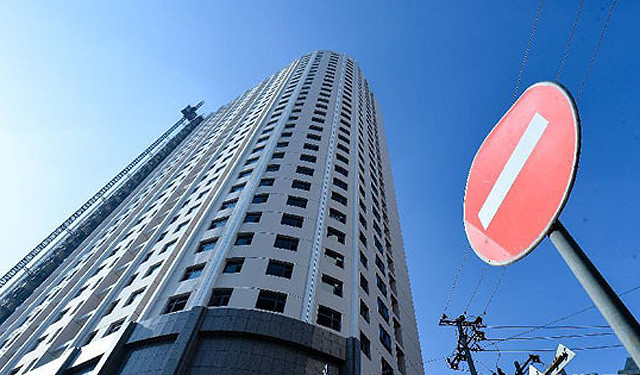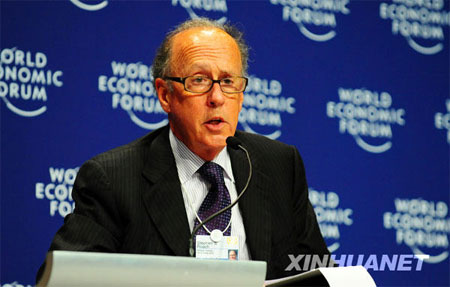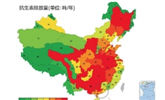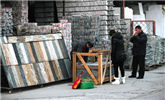外媒:中国房价涨幅是全球平均水平5倍 但别指望大跌
2017-07-27 10:55:59
来源:凤凰国际iMarkets
这篇文章是由摩根士丹利亚洲前董事长所撰写,他用详实的数据揭示了西方唱空中国经济以及楼市的谬误性。

新闻配图
为什么中国经济具有很高的韧性?
原标题:Deciphering China’s Economic Resilience

凤凰iMarkets编译自project-syndicate网站,这篇文章是由摩根士丹利亚洲前董事长、公司首席经济学家Stephen S. Roach所撰写,Stephen 不仅是耶鲁大学杰克逊全球事务学院的高级研究员,也是耶鲁大学管理学院的高级讲师。他用详实的数据揭示了西方唱空中国经济以及楼市的谬误性。
【扩展阅读】
以下是全文翻译:
中国经济再一次顶住了众多持否定态度大佬们对中国经济的唱衰。
在经历连续6年的减速之后,2017年中国的实际GDP增长似乎正在逐渐回升。据报道,第二季度的年化增长率为6.9%,超过了2016年同期的6.7%,并远高于国际观察家之前达成的共识。仅仅在几个月前,他们还预计今年的经济增长率将接近6.5%,并在2018年进一步放缓至6%。
长期以来,我一直认为,过度着迷于GDP数据会让人们忽略影响中国经济增长辩论的深层次问题。这是因为中国经济正处于具有非凡意义的结构转型之中:以制造业为主导的生产者模式转向日益强大的以服务业为主导的消费者模式。
就这一点来看,这意味着经济增长动力将从过快增长的投资和出口转向增长相对较慢的国内私人消费。这样,总体GDP的增长放缓既是不可避免的,也是合乎需要的。在这种背景下,人们需要意识到中国经济的脆弱性。
回顾亚太金融危机:如果没有中国 全球将遭重创
这场论辩有着悠久的历史。在20世纪90年代末的亚洲金融危机期间,我第一次闻到论辩的硝烟。危机波及泰国、印尼、韩国和中国台湾,人们普遍认为中国是下一个受影响国家。1998年10月,《经济学人》的封面故事用一艘中国式帆船被卷入一个巨大漩涡进行了形象说明,充分体现了当时人们对中国经济的看法。
然而,事实并非如此。当亚洲金融危机过去后,中国经济几乎没有受到一点影响。1998年至1999年间,实际GDP增速暂时放缓至7.7%,但在随后的十年里又恢复到了10.3%。
中国经济在金融危机期间表现出的韧性同样能说明问题。在这一自上世纪30年代以来最严重的经济危机期间,中国经济在2008年-2009年间的年均增长率仍然高达9.4%。在危机爆发前的3年里,经济增长的速度是不可持续的12.7%。危机期间,增长速度虽然有所下滑,但相比1980年后30年里平均10%的增长水平,这只是小幅下降。
没错,如果不是因为中国经济在金融危机中表现出的强大韧性,2009年全球GDP将不只是收缩0.1%,而是1.3%,这将是二战以来全球经济最大幅度的下滑。
去杠杆叠加高房价:中国仍然不会重走日本老路
最近一轮对中国经济的悲观预期关注去杠杆和与此相关的房地产市场紧缩带来的双重压力,实际上就是一种日本式的经济停滞。再一次,西方国家搞错了重点。与日本一样,中国是一个高储蓄经济体,其不断攀升的债务主要属于内债。然而,如果说有什么区别的话,那就是中国比日本更有缓冲能力,以避免债务持续性问题。
根据国际货币基金组织的数据,2017年中国的国民储蓄可能达到GDP的45%,远高于日本的28%。日本政府的债务总额曾达到GDP的239%,但日本依然能够避免主权债务危机。而中国拥有更大的储蓄缓冲和更小的主权债务负担(占GDP的49%),因此能更好地避免这种内部崩溃。
毫无疑问,中国的企业债务问题愈发严重。2016年末,非金融债务占GDP的比率估计达到了157%,而2008年末仅为102%。这就使得国有企业(不断增加的债务大部分都集中在了国企)的改革势在必行,且改革在未来几年里尤为紧迫。
中国房价有足够的人口需求支撑
此外,人们总是有理由担心中国的房地产市场。毕竟,一个正在崛起的中产阶级需要负担得起的住房。中国城市人口比例从1980年的不到20%上升到2016年的56%,到2030年时,这一比例极有可能达到70%,因此这并非杞人忧天。
但这意味着中国的房地产市场(与其他完全城市化的主要经济体不同)在需求方面得到了充足的支持,在未来10-15年里,城市人口可能会继续保持1-2%的年均增长速度。
自2005年以来,中国的房价上涨了近50%,几乎是全球平均水平的五倍(根据国际清算银行和国际货币基金组织全球住房观察的数据),支付能力显然是一个合理的担忧。中国面临的挑战是谨慎管理住房供给的增长,以满足城市化的需求,同时不助长过度投机和危险的资产泡沫。
与此同时,中国经济也从2017年初强劲的周期性反弹中获得支持。6月份录得的出口同比增长11.3%,与前些年的数据形成鲜明对比,后者受到危机后全球经济复苏疲弱的不利影响。与此类似,到2017年年中,经通胀调整后的零售销售额的年化增长率达10%,比总体GDP增长6.9%的速度快45%,这反映出家庭收入的快速增长,以及电子商务带来的强大(可能被低估)增长动力。
长期以来,悲观主义者一直像观察他们自己国家的经济那样观察中国经济,不断重复着耶鲁大学历史学家乔纳森•斯宾塞(Jonathan Spence)多年前警告人们会犯的一个经典错误。
人们普遍认为,让日本和美国受累的资产泡沫同样会对中国构成威胁。同样,对于中国近年来债务密集型的经济增长方式,他们预计也会像在其他地方一样产生相同的后果。
观察家们很容易把遭受过危机的发达经济体的情况套在中国身上。这在过去是错误的做法,今天仍然是错的。(双刀)
英文原文:
Deciphering China’s Economic Resilience
NEW HAVEN – Once again, the Chinese economy has defied the hand wringing of the nattering nabobs of negativism. After decelerating for six consecutive years, real GDP growth appears to be inching up in 2017. The 6.9% annualized increase just reported for the second quarter exceeds the 6.7% rise in 2016 and is well above the consensus of international forecasters who, just a few months ago, expected growth to be closer to 6.5% this year, and to slow further, to 6%, in 2018.
I have long argued that the fixation on headline GDP overlooks deeper issues shaping the China growth debate. That is because the Chinese economy is in the midst of an extraordinary structural transformation – with a manufacturing-led producer model giving way to an increasingly powerful services-led consumer model.
To the extent that this implies a shift in the mix of GDP away from exceptionally rapid gains in investment and exports, toward relatively slower-growing internal private consumption, a slowdown in overall GDP growth is both inevitable and desirable. Perceptions of China’s vulnerability need to be considered in this context.
This debate has a long history. I first caught a whiff of it back in the late 1990s, during the Asian financial crisis. From Thailand and Indonesia to South Korea and Taiwan, China was widely thought to be next. An October 1998 cover story in The Economist, vividly illustrated by a Chinese junk getting sucked into a powerful whirlpool, said it all.
Yet nothing could have been further from the truth. When the dust settled on the virulent pan-regional contagion, the Chinese economy had barely skipped a beat. Real GDP growth slowed temporarily, to 7.7% in 1998-1999, before reaccelerating to 10.3% in the subsequent decade.
China’s resilience during the Great Financial Crisis was equally telling. In the midst of the worst global contraction since the 1930s, the Chinese economy still expanded at a 9.4% average annual rate in 2008-2009. While down from the blistering, unsustainable 12.7% pace recorded during the three years prior to the crisis, this represented only a modest shortfall from the 30-year post-1980 trend of 10%. Indeed, were it not for China’s resilience in the depths of the recent crisis, world GDP would not have contracted by 0.1% in 2009, but would have plunged by 1.3% – the sharpest decline in global activity of the post-World War II era.
The latest bout of pessimism over the Chinese economy has focused on the twin headwinds of deleveraging and a related tightening of the property market – in essence, a Japanese-like stagnation. Once more, the Western lens is out of focus. Like Japan, China is a high-saving economy that owes its mounting debt largely to itself. Yet, if anything, China has more of a cushion than Japan to avoid sustainability problems.
According to the International Monetary Fund, China’s national savings is likely to hit 45% of GDP in 2017, well above Japan’s 28% saving rate. Just as Japan, with its gross government debt at 239% of GDP, has been able to sidestep a sovereign debt crisis, China, with its far larger saving cushion and much smaller sovereign debt burden (49% of GDP), is in much better shape to avoid such an implosion.
To be sure, there can be no mistaking China’s mounting corporate debt problem – with nonfinancial debt-to-GDP ratios hitting an estimated 157% of GDP in late 2016 (versus 102% in late 2008). This makes the imperatives of state-owned enterprise reform, where the bulk of rising indebtedness has been concentrated, all the more essential in the years ahead.
Moreover, there is always good reason to worry about the Chinese property market. After all, a rising middle class needs affordable housing. With the urban share of China’s population rising from less than 20% in 1980 to more than 56% in 2016 – and most likely headed to 70% by 2030 – this is no trivial consideration.
But this means that Chinese property markets – unlike those of other fully urbanized major economies – enjoy ample support from the demand side, with the urban population likely to remain on a 1-2% annualized growth trajectory over the next 10-15 years. With Chinese home prices up nearly 50% since 2005 – nearly five times the global norm (according to the Bank for International Settlements and IMF global housing watch) – affordability is obviously a legitimate concern. The challenge for China is to manage prudently the growth in housing supply needed to satisfy the demand requirements of urbanization, without fostering excessive speculation and dangerous asset bubbles.
Meanwhile the Chinese economy is also drawing support from strong sources of cyclical resilience in early 2017. The 11.3% year-on-year gain in exports recorded in June stands in sharp contrast with earlier years, which were adversely affected by a weaker post-crisis global recovery. Similarly, 10% annualized gains in inflation-adjusted retail sales through mid-2017 – about 45% faster than the 6.9% pace of overall GDP growth – reflect impressive growth in household incomes and the increasingly powerful (and possibly under-reported) impetus of e-commerce.
Pessimists have long viewed the Chinese economy as they view their own economies – repeating a classic mistake that Yale historian Jonathan Spence’s seminal assessment warned of many years ago. The asset bubbles that broke Japan and the United States are widely presumed to pose the same threat in China. Likewise, China’s recent binge of debt-intensive economic growth is expected to have the same consequences as such episodes elsewhere.
Forecasters find it difficult to resist superimposing the outcomes in major crisis-battered developed economies on China. That has been the wrong approach in the past; it is wrong again today.
[责任编辑:孔维卓 PF076]
责任编辑:孔维卓 PF076
免责声明:本文仅代表作者个人观点,与凤凰网无关。其原创性以及文中陈述文字和内容未经本站证实,对本文以及其中全部或者部分内容、文字的真实性、完整性、及时性本站不作任何保证或承诺,请读者仅作参考,并请自行核实相关内容。
近一年
13.92%
混合型-华安逆向策略
凤凰点评:
业绩长期领先,投资尖端行业。
网罗天下

凤凰财经官方微信
视频
-

李咏珍贵私人照曝光:24岁结婚照甜蜜青涩
播放数:145391
-

金庸去世享年94岁,三版“小龙女”李若彤刘亦菲陈妍希悼念
播放数:3277
-

章泽天棒球写真旧照曝光 穿清华校服肤白貌美嫩出水
播放数:143449
-

老年痴呆男子走失10天 在离家1公里工地与工人同住
播放数:165128
财富派

战火锻造的富兰克林家族
点击数:1378761

奥巴马拒住的酒店原来是中国人的
点击数:1398712

为什么这个90后是未来的扎克伯格?
点击数:1765508

陈曦:琴与弓的生活美学
点击数:1928339





















